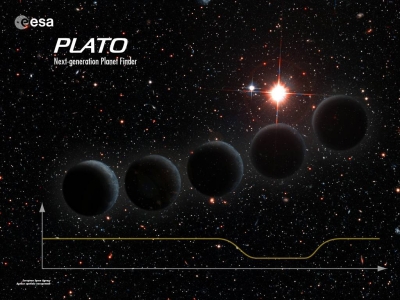European Space Agency will send PLATO observatory to space

Of course, at this observatory there will be no astronomers, radiophysicists and other specialists. PLATO is an autonomous spacecraft that will search for potentially habitable exoplanets in deep space. The research method is to monitor the brightness of millions of stars neighboring the Solar System, and to analyze the change in brightness of stars.
PLATO is equipped with 34 small telescopes and cameras for observing the stars. The main way to detect exoplanets at the present time is to fix the change in brightness of the star when the planet passes in front of the star's disk. Those. the planet is between the observer and its star, as a result of which the observer, fixing changes in the brightness of the star, can say with confidence about the presence of such a planet in its luminaries.
')

Of course, this type of observation has its own characteristics - after all, the brightness of stars changes not only due to the influence of the planets. Nevertheless, constant observation and analysis of neighboring stars allows us to “separate the wheat from the chaff,” that is, to detect exoplanets.
PLATO data will be combined with ground-based observatory observation data. As a result, scientists will be able to recognize the radius, mass, and density of exoplanets.
PLATO will be launched on Soyuz media from French Guiana. The PLATO orbit will be similar to the orbit of another space station observing the stars - Gaia. True, the launch of the observatory will be held only in 2024. First, Solar Orbiter and Euclid machines will be launched in 2017 and 2020.
Via theverge
Source: https://habr.com/ru/post/213341/
All Articles